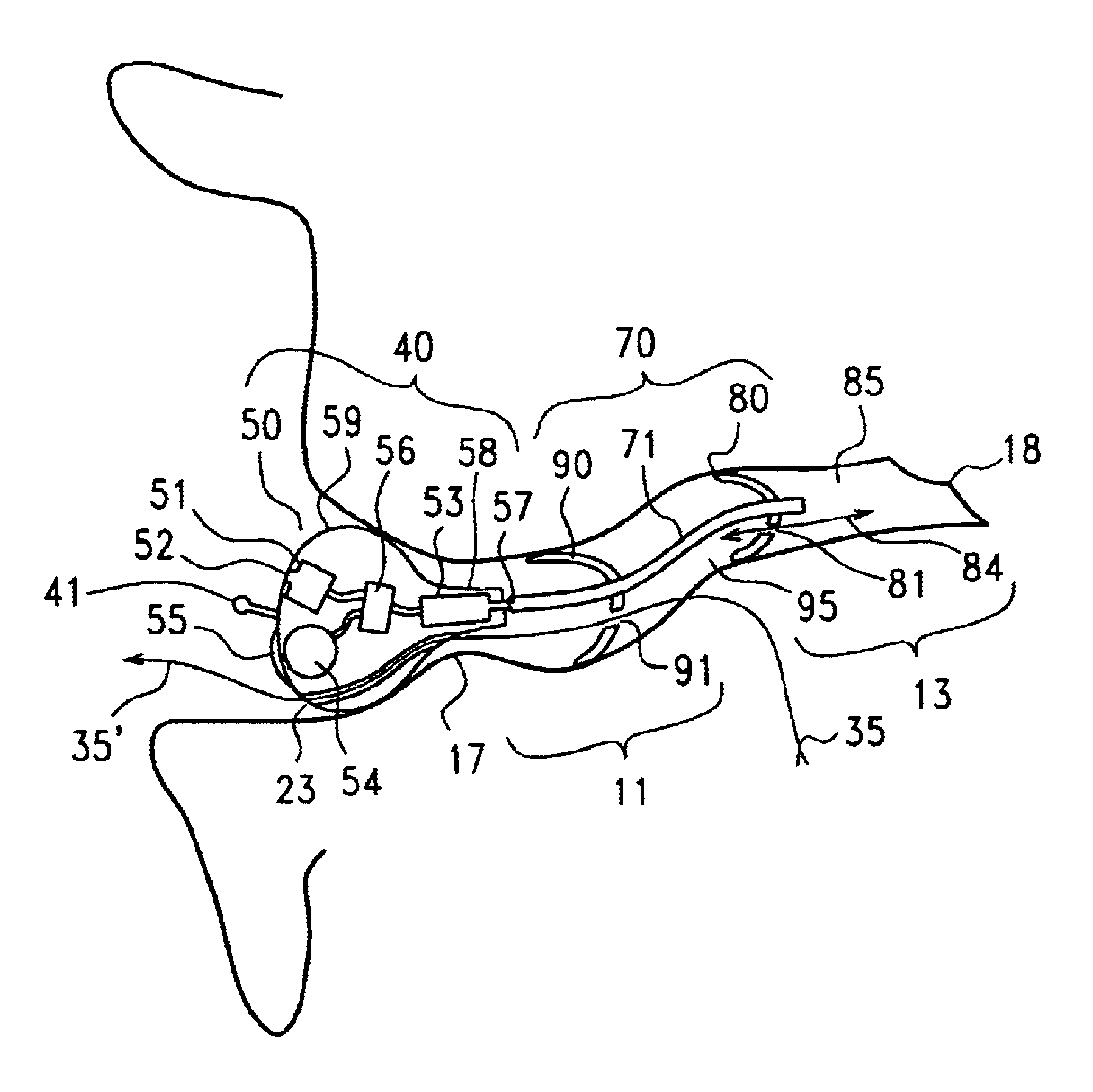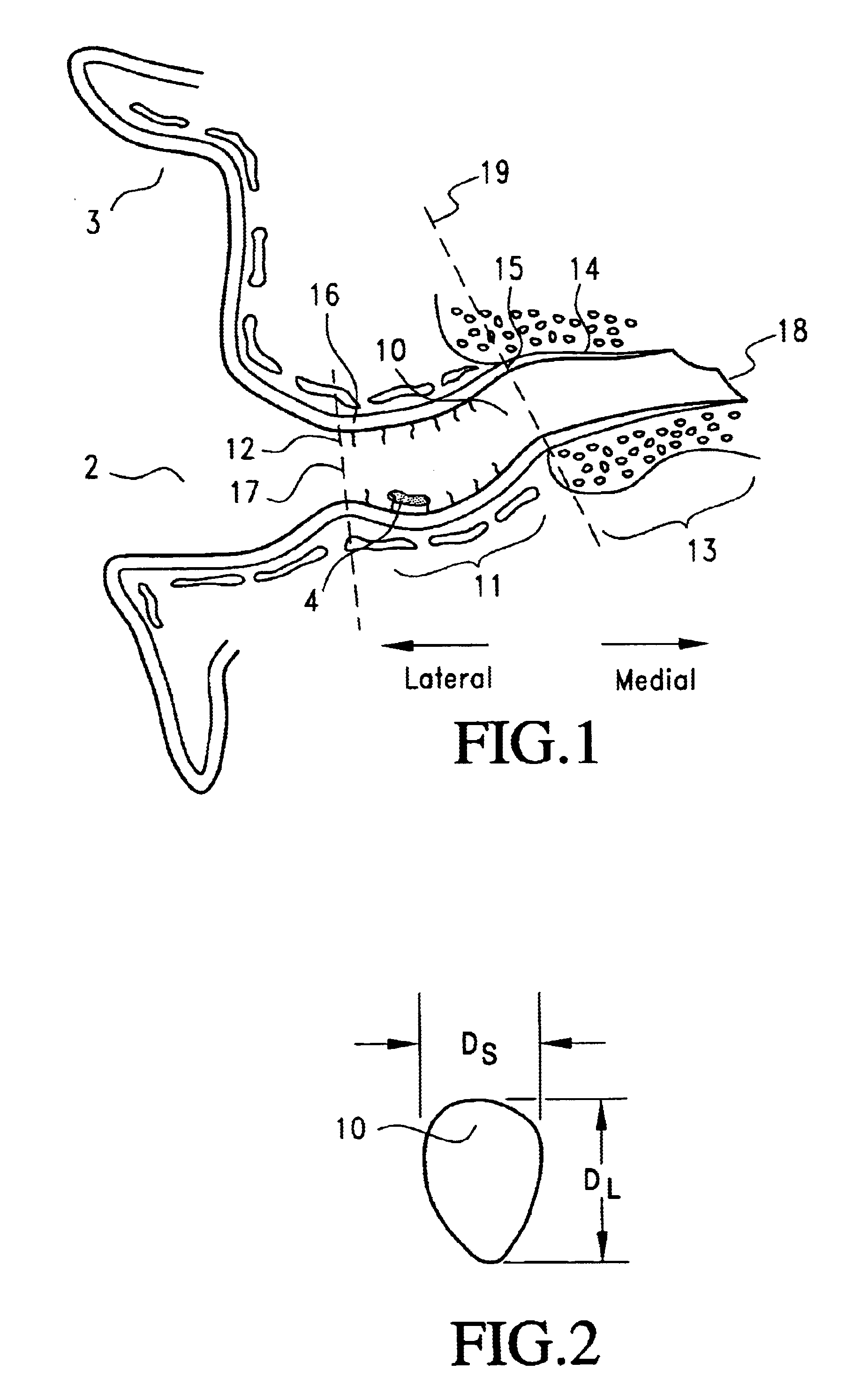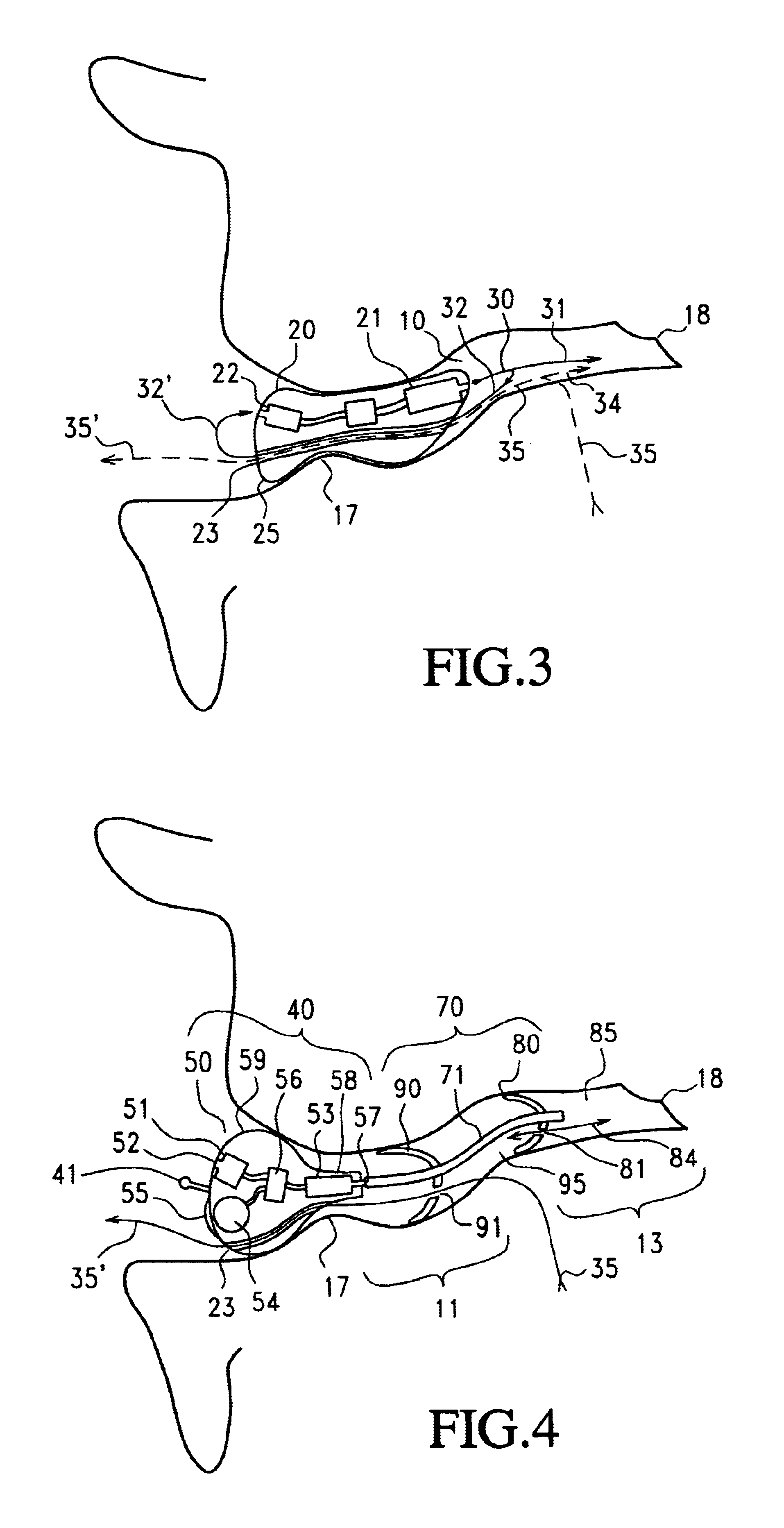Canal hearing device with tubular insert
a hearing device and tubular insert technology, applied in the field of hearing devices, can solve the problems of millions of individuals affected by hearing loss
- Summary
- Abstract
- Description
- Claims
- Application Information
AI Technical Summary
Benefits of technology
Problems solved by technology
Method used
Image
Examples
experiment a
In a study performed by the applicants herein, the cross-sectional dimensions of ear canals were measured from 10 canal impressions obtained from adult cadaver ears. The long (vertical) and short (horizontal) diameters, D.sub.L and D.sub.S respectively, of cross sections at the center of the cartilaginous region 11 and bony region 13 were measured and shown in Table 1 below. The diameters where measured across the widest points of each cadaver impression at each of the two regions. All measurements were taken by a digital caliper (model CD-6"CS manufactured by Mitutoyo). The impression material used was low viscosity Hydrophilic Vinyl Polysiloxane (manufactured by Densply / Caulk) using a dispensing system (model Quixx manufactured by Caulk).
Results and Conclusion
The diameter dimensions of the ear canal vary significantly among adult individuals. In general, variations occur more so across the short diameters (D.sub.S). Although not apparent from the above measurements, the cartilagin...
experiment b
The dual seal concept in relation to acoustic sealing (attenuation) and occlusion effects was simulated in a setup shown in FIG. 20. A test cavity 120, simulating an ear canal and a concha cavity, was produced from a cut section of a syringe. The test cavity 120 had a volume of 1.5 cubic centimeters (cc) with markings indicating the gradual volume within. The test cavity 120 had a lateral opening 121 and a medial opening 123 terminated by a thin diaphragm 123 simulating an eardrum. The test cavity had an ID of approximately 8.5 mm and length of about 27 mm.
The setup comprised a first receiver R1 (a speaker-model EH-7159 manufactured by Knowles Electronics of Itasca, Ill.) for producing acoustic sounds simulating a receiver 53 (FIGS. 4 and 6) of a hearing aid, and a second receiver R2 (also model EH-7195) for producing sounds simulating occlusion sounds 35 (FIGS. 4 and 6). The receivers R1 and R2 were connected to a signal generator (SG) incorporated within a spectrum analyzer (SA), ...
experiment c
The acoustic conduction advantage, particularly high frequency boosting, of the tubular insert was tested according to the following experiment.
A prototype of the canal hearing device according to the embodiment of FIG. 4 was fabricated. The electroacoustic circuit of FIG. 21 was implemented with a miniature microphone / amplifier M (model FI-3342 manufactured by Knowles Electronics of Itasca, Ill.), class-D receiver R (model FS3379 also manufactured by Knowles Electronics) and miniature 450K Ohm volume trimmer R.sub.G (model PJ-62 manufactured by Microtronics A / S of Denmark). Volume trimmer R.sub.G was connected across the output terminal and the Feedback terminal FB of microphone M. Miniature capacitors C1 and C.sub.2 with values of 0.01 uF and 2.2 uF, respectively were employed. A reed switch assembly (RS) employing a miniature reed-switch (model HSR-003DT, manufactured by Hermetic Switch, Inc. of Chickasha, Okla.) and a miniature Neudymium Iron Boron (NdFeB) magnet (96 in FIG. 18)...
PUM
 Login to View More
Login to View More Abstract
Description
Claims
Application Information
 Login to View More
Login to View More - R&D
- Intellectual Property
- Life Sciences
- Materials
- Tech Scout
- Unparalleled Data Quality
- Higher Quality Content
- 60% Fewer Hallucinations
Browse by: Latest US Patents, China's latest patents, Technical Efficacy Thesaurus, Application Domain, Technology Topic, Popular Technical Reports.
© 2025 PatSnap. All rights reserved.Legal|Privacy policy|Modern Slavery Act Transparency Statement|Sitemap|About US| Contact US: help@patsnap.com



